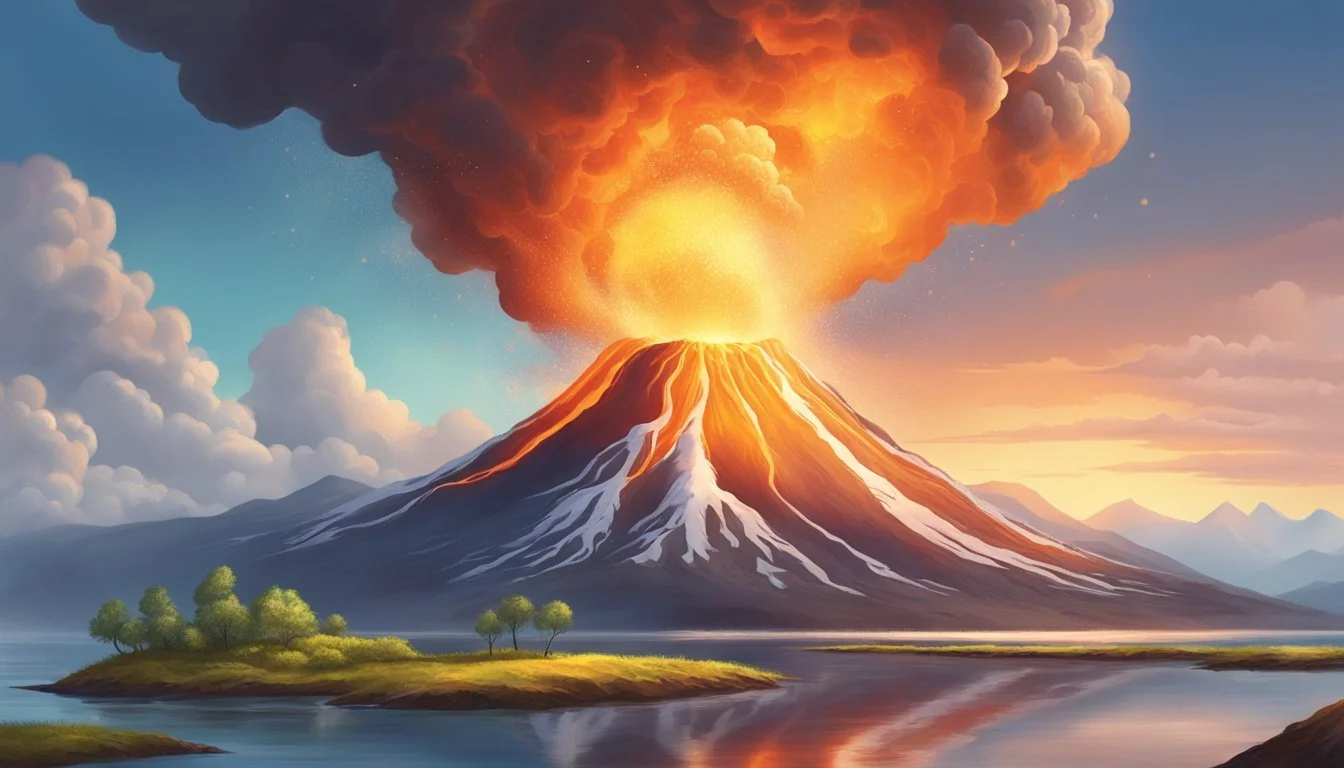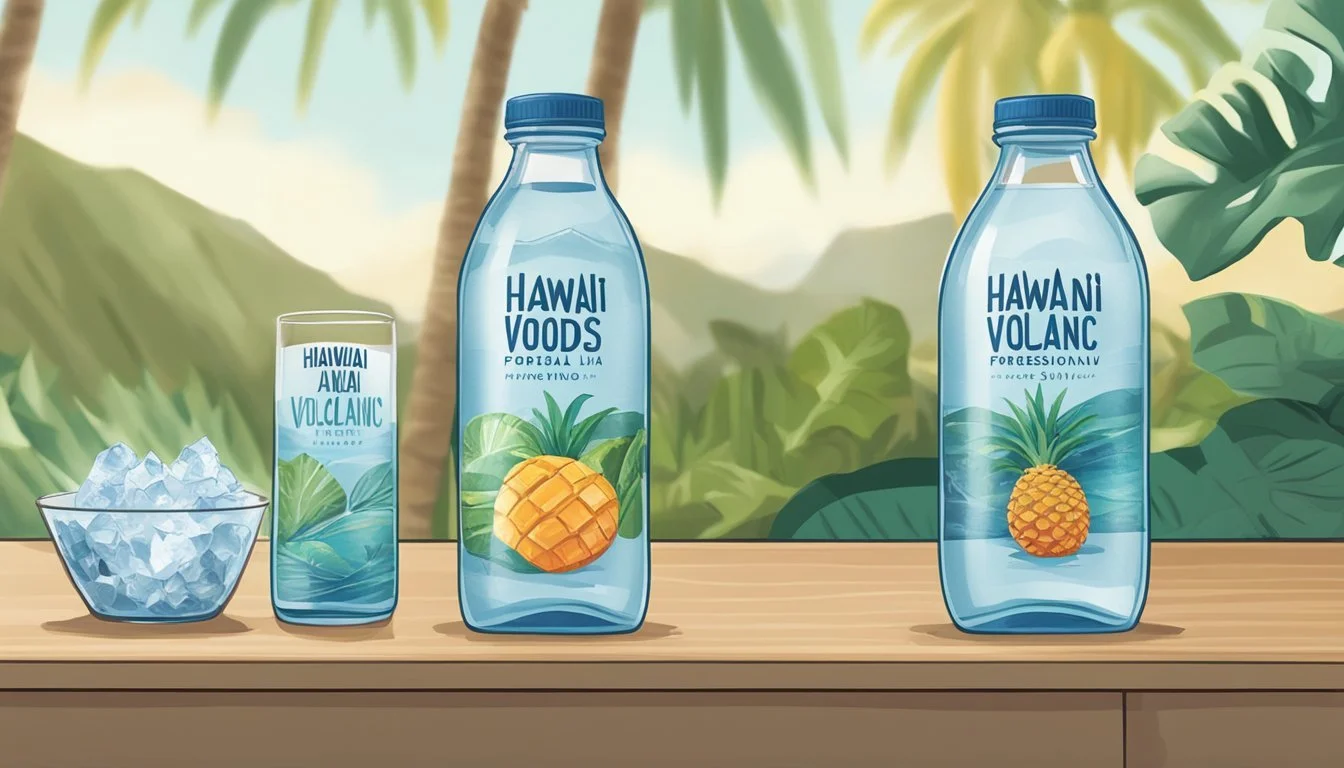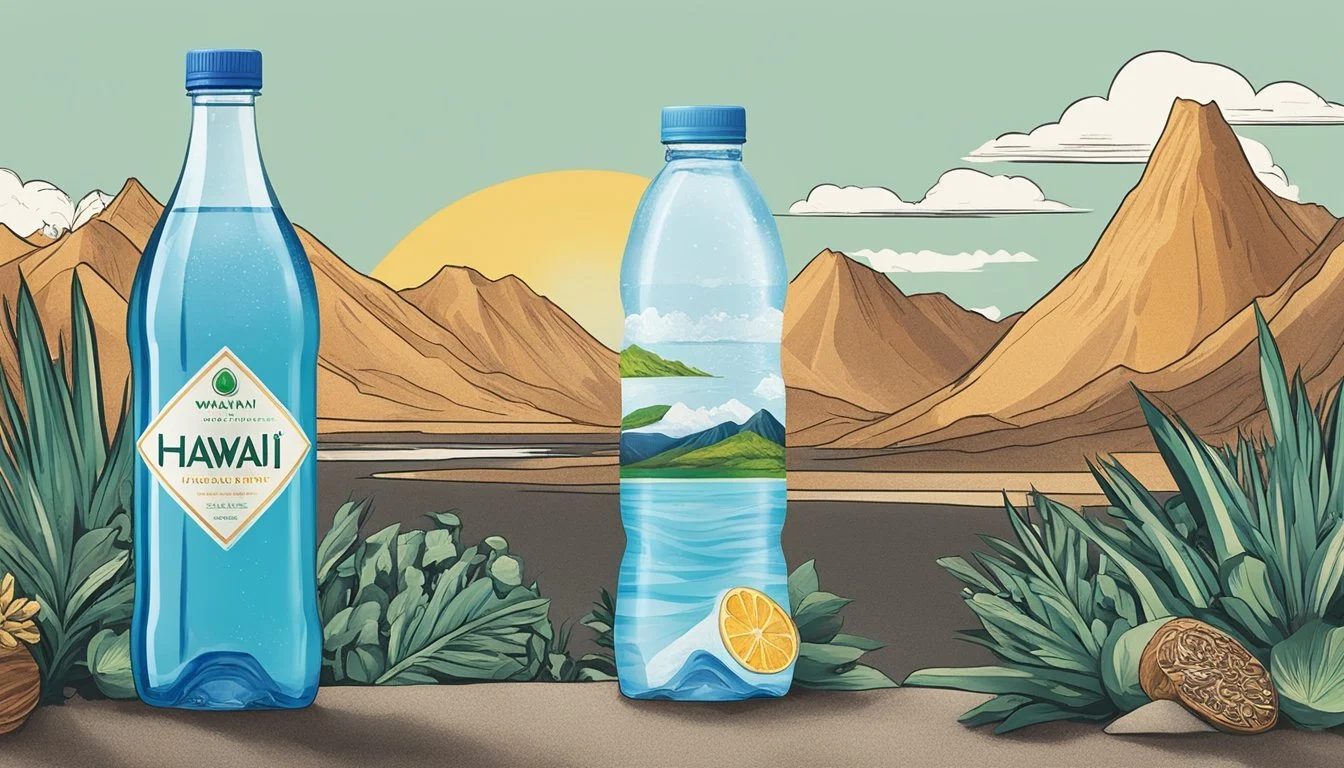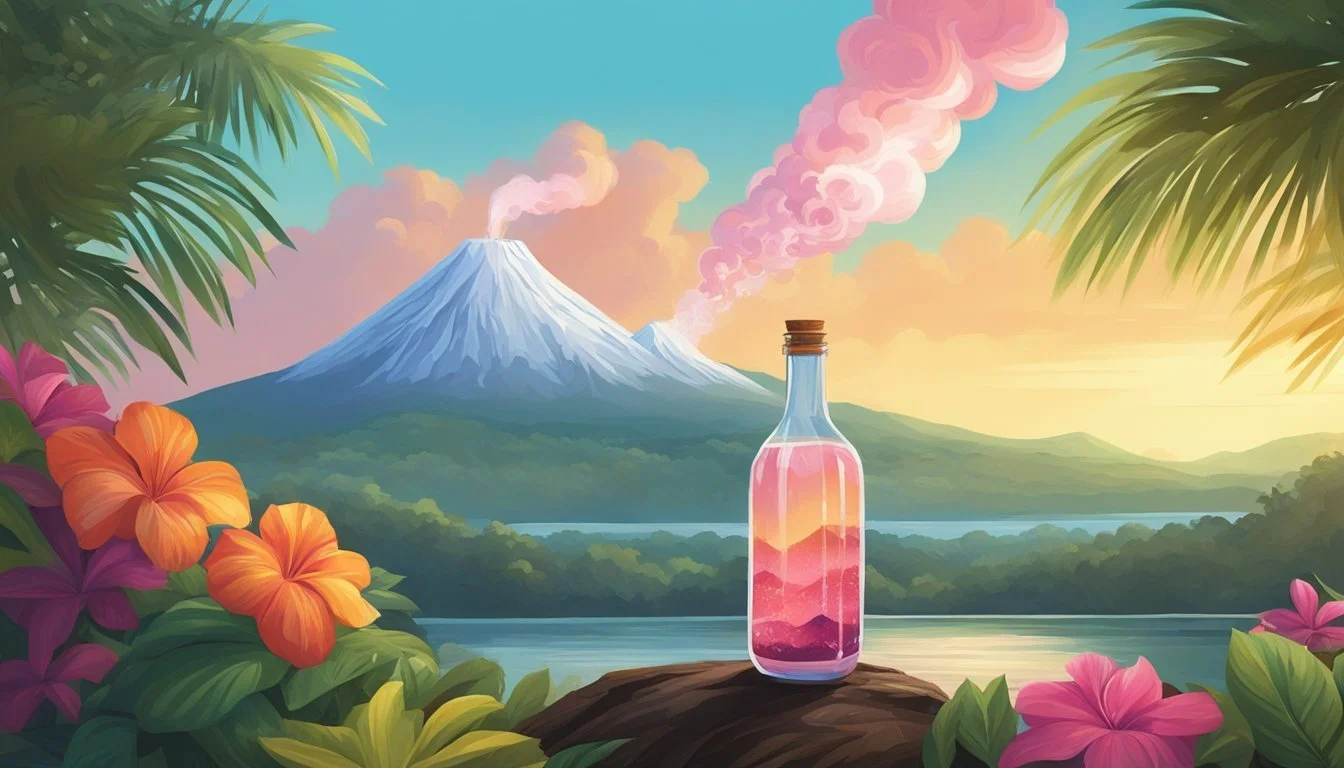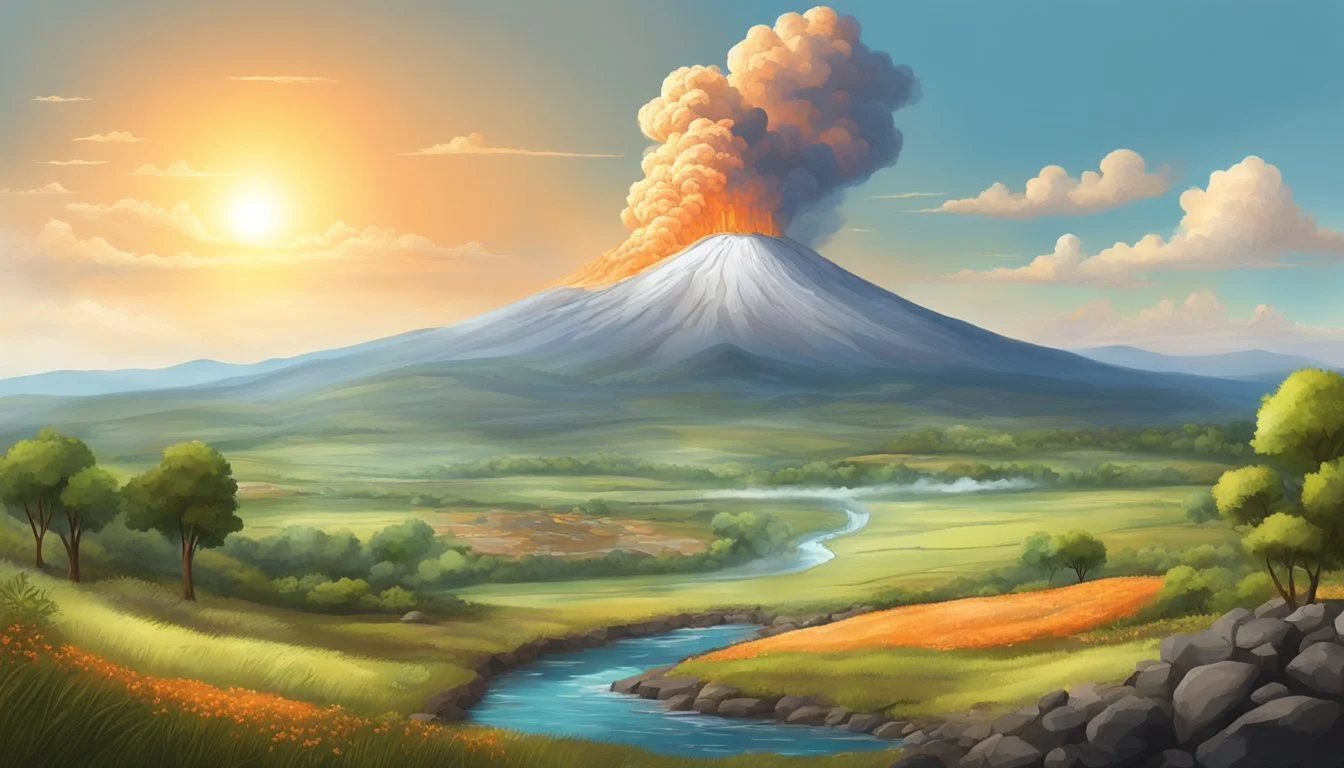Hawai’i Volcanic vs. Whole Foods Italian Still Mineral Water
Which Bottled Water is Superior?
When comparing Hawai’i Volcanic Water and Whole Foods Italian Still Mineral Water, it becomes essential to evaluate their unique characteristics to determine which one stands out. Hawai’i Volcanic Water, with a TDS of approximately 40 ppm and a pH of about 5, offers a slightly acidic taste that reflects its volcanic origins. In contrast, Whole Foods Italian Still Mineral Water, sourced from Italy, provides a range of mineral content and a neutral pH, catering to those who prefer a milder taste.
The choice between these two bottled waters often comes down to personal preference. Hawai’i Volcanic Water appeals to those who enjoy the unique, mineral-rich profile that evokes volcanic activity. On the other hand, Whole Foods Italian Still Mineral Water, widely available and affordable, suits individuals looking for a reliable, everyday hydration option without any strong mineral aftertaste.
Whether you're drawn to the exotic appeal of Hawaiian volcanic water or the classic purity of Italian still mineral water, both options offer distinct advantages. Preference hinges on whether one seeks the adventurous palate of Hawai’i's volcanic touch or the familiar comfort of Italian mineral water.
Hawai’i Volcanic and Whole Foods Italian Still Mineral Water Overview
Hawai’i Volcanic and Whole Foods Italian Still Mineral Water have distinct origins and sources, as well as unique branding and market presence. This overview dives into the specifics of each brand, highlighting their attributes and what sets them apart.
Origin and Source
Hawai’i Volcanic water is sourced from the Mauna Loa Volcano in Hawaii. Rain and snowmelt percolate through miles of porous lava rock, undergoing natural filtration. This process imparts a unique minerality and naturally alkaline pH to the water, enriched with electrolytes.
Whole Foods Italian Still Mineral Water is sourced from the Lombardy region in Italy. This mineral water is drawn from underground springs, naturally filtered through layers of rock. It is known for its purity and neutral taste, providing a straightforward hydration option.
Branding and Market Presence
Hawai’i Volcanic has built a premium brand image, emphasizing its sustainable practices, such as carbon-neutral certifications and community contributions. The water's unique filtration method and mineral-rich profile add to its premium positioning. It is often marketed for its smooth, slightly sweet taste and health benefits.
Whole Foods Italian Still Mineral Water is marketed through Whole Foods Market, a well-known retailer. The brand focuses on offering a straightforward, high-quality hydration experience. It does not emphasize as many premium features as Hawai’i Volcanic, positioning itself as a reliable, everyday mineral water choice.
Chemical and Mineral Composition
When comparing Hawai’i Volcanic and Whole Foods Italian Still Mineral Water, key factors to consider include pH levels, mineral content, and the presence of contaminants. These aspects greatly influence the overall quality and health benefits of the water.
pH Levels and Alkalinity
pH and alkalinity play a crucial role in determining the water's overall quality. Hawai’i Volcanic boasts a pH range of 7.6 to 8.2, making it one of the most naturally alkaline waters. This higher pH level can help neutralize acidity in the body.
Whole Foods Italian Still Mineral Water typically has a lower pH range, closer to neutral, around 7.0. Although less alkaline, it provides a balanced option for consumers who prefer a more neutral water profile.
Mineral Content and Health Benefits
Both Hawai’i Volcanic and Whole Foods Italian Still Mineral Water offer unique mineral compositions. Hawai’i Volcanic is rich in minerals like calcium, magnesium, potassium, and silica. These contribute to bone and heart health, and silica aids collagen synthesis.
Whole Foods Italian Still Mineral Water also contains vital minerals, though in different concentrations. It provides essential calcium and magnesium, supporting bone density and muscle function. The specific health benefits depend on the individual mineral levels present in each water type.
Presence of Contaminants
Ensuring the absence of harmful contaminants is essential. Hawai’i Volcanic prides itself on being free from pollutants such as lead and arsenic, offering a clean and safe hydration source.
Whole Foods Italian Still Mineral Water also maintains strict quality control to keep contaminants at negligible levels. Regular testing ensures that both brands provide safe drinking water, yet their mineral and contaminant profiles might slightly differ due to their natural sourcing locations.
Taste Profile and Culinary Uses
Hawai’i Volcanic and Whole Foods Italian Still Mineral Water each offer unique taste profiles and versatile uses in culinary applications. Their distinct characteristics cater to different preferences and dietary needs, making them suitable for various meals and beverages.
Taste and Sensory Experience
Hawai’i Volcanic boasts a crisp and refreshing taste with a subtle hint of minerals. Its smooth texture and slight sweetness make it pleasant to drink on its own.
This water pairs exceptionally well with a variety of light dishes, ideal for balancing flavors in a Mediterranean diet. It enhances the taste of fresh salads, seafood, and soft cheeses without overpowering them.
On the other hand, Whole Foods Italian Still Mineral Water provides a clean, slightly mineral taste that complements hearty and rich flavors. Its mineral content lends a delicate touch to the palate, making it suitable for pairing with robust dishes.
This water is particularly effective in elevating the flavors of pastas, roasted meats, and Italian cuisine. Its purity ensures that it doesn't compete with the food's intrinsic tastes.
Environmental Impact and Sustainability
The environmental impact and sustainability of bottled water often depend on factors like bottle materials and the sustainability of the water source. The choice between Hawai’i Volcanic and Whole Foods Italian Still Mineral Water significantly affects ecological footprints and resource conservation practices.
Bottle Materials and Environmental Footprint
Hawai’i Volcanic uses glass bottles, which are reusable and often recycled more easily than plastic. Glass production is energy-intensive, but it results in less waste compared to single-use plastic bottles.
Glass' inert nature ensures no chemical leaching into the water, making it a safer choice for health and the environment.
Whole Foods Italian Still Mineral Water often uses plastic bottles, which are lighter and less costly to transport. However, the environmental burden is higher. Plastic contributes significantly to landfill waste and ocean pollution.
Production also releases harmful chemicals. Despite recyclable options, many plastic bottles end up as waste. Opting for reusable and recyclable packaging can mitigate this impact.
Water Source Sustainability and Conservation
Hawai’i Volcanic highlights its sustainably sourced water from Hawaii’s abundant rainfall. This process respects local ecosystems and ensures minimal disruption. They emphasize mana, or the spiritual energy of their source, promoting a harmony between usage and nature.
Whole Foods Italian Still Mineral Water sources its water from specific Italian springs. The sustainability practices involve monitoring and conserving water levels to prevent depletion.
To minimize environmental impacts, both companies employ practices that uphold the natural balance of their source ecosystems.
Supporting brands with strong environmental credentials can significantly lessen the ecological footprint related to bottled water consumption.
Health and Hydration
Hawai’i Volcanic and Whole Foods Italian Still Mineral Water both offer varying health benefits and hydration properties due to their unique mineral profiles and pH levels.
Hydration and Electrolyte Balance
Hydration is crucial for maintaining the body's fluid balance and overall health. Hawai’i Volcanic water has a Total Dissolved Solids (TDS) level of about 40 ppm and a pH of 5, which indicates it is slightly acidic. This might affect some individuals who are sensitive to pH levels.
On the other hand, Whole Foods Italian Still Mineral Water contains essential electrolytes like calcium, magnesium, and potassium. These minerals are vital for maintaining electrolyte balance, especially for athletes or anyone engaging in strenuous activities. The pH balance in this water is closer to neutral, making it easier on the digestive system.
Contribution to Daily Nutrient Intake
Both waters contribute differently to daily nutrient intake. Hawai’i Volcanic water is relatively low in minerals, which might limit its contribution to daily intake of essential nutrients like calcium or magnesium. This could be a consideration for those looking to supplement these minerals through their drinking water.
Whole Foods Italian Still Mineral Water, however, is enriched with a balanced profile of minerals such as calcium, magnesium, and potassium. Regular consumption aids in fulfilling part of the Recommended Dietary Intake (RDI) for these nutrients. This is particularly beneficial for individuals seeking to support a healthy life through balanced mineral intake.
Packaging and Accessibility
Both Hawai’i Volcanic and Whole Foods Italian Still Mineral Water offer different packaging options and availability features, catering to different customer needs.
Bottle Design and Portability
Hawai’i Volcanic water comes in sleek yet sturdy glass bottles, offering a premium feel. The available sizes include 500ml and 777ml, suitable for both individual and family use.
Whole Foods Italian Still Mineral Water, on the other hand, utilizes plastic bottles which are lighter and easier to carry. The typical size is 33.8 fl oz (1 liter), which is convenient for those needing more water on-the-go.
Availability and Subscription Services
Hawai’i Volcanic offers various subscription services, allowing customers to receive regular deliveries at discounted rates. This convenience can be particularly appealing to those who prefer hassle-free restocking.
Whole Foods Italian Still Mineral Water is easily accessible in their stores, with offers and promotions often available. However, in some regions, this brand might not be as widely available online, limiting its accessibility for those who prefer shopping from home.
Consumer Options and Varieties
Hawai’i Volcanic and Whole Foods Italian Still Mineral Water offer a variety of options when it comes to flavors, carbonation levels, volumes, and packaging, catering to different consumer preferences.
Flavors and Carbonation Levels
Hawai’i Volcanic offers both still and sparkling varieties of water. The still water is naturally alkaline, sourced from Hawaiian volcanic rocks, providing a distinctive, crisp taste. Their sparkling water has a gentle effervescence, suitable for those who prefer light carbonation.
Whole Foods Italian Still Mineral Water, bottled by Acqua Panna, is available primarily as still water. It boasts a smooth, velvety texture, making it a favorite for pairing with food. Though it doesn't offer a sparkling variant, comparable products from brands like San Pellegrino or Ferrarelle can be considered for those who seek bubbles.
Volume and Packaging Variants
Hawai’i Volcanic comes in multiple packaging sizes and materials to cater to different needs. Options include standard plastic bottles and more eco-friendly glass bottles. Sizes range from compact, portable bottles to larger family-sized ones, offering flexibility for travel or home consumption.
Whole Foods Italian Still Mineral Water, bottled in partnership with Acqua Panna, is typically offered in premium glass bottles, enhancing its aesthetic appeal and maintaining water purity. Common sizes include single-serve bottles ideal for personal use, and larger formats perfect for sharing at meals, similar to other premium brands like Fiji and Waiakea.
Both brands prioritize quality and provide various options to meet the preferences of their diverse consumer base.
Comparative Analysis
In evaluating Hawai’i Volcanic and Whole Foods Italian Still Mineral Water, key factors such as pricing, distinctive features, and consumer market preferences should be considered to determine which bottled water stands out more.
Price Comparison
Hawai’i Volcanic is generally positioned as a premium product in the market, reflecting its luxury branding and unique source from Hawaiian springs. Prices for a standard bottle often range from $2.50 to $4.00, depending on size and retailer.
Whole Foods Italian Still Mineral Water, sourced from La Galvanina Spa in Rimini, Italy, falls in the mid-range category. A typical bottle costs around $1.50 to $2.50. This makes it more accessible for daily consumption while still maintaining a refined image.
Unique Selling Propositions
Hawai’i Volcanic offers a distinct appeal with its high-end packaging and claims of volcanic filtration, which purportedly enhances its mineral composition. Its branding leverages the pristine and exotic image of Hawaiian volcanic water, often marketed alongside notable brands like Fiji and Starkey.
Whole Foods Italian Still Mineral Water differentiates itself with its historical and cultural ties to Italian water brands. Bottled at a renowned source, it boasts a balanced mineral profile intended to complement fine dining experiences. The slightly acidic pH of around 5 might be seen as a unique trait for those considering acidity levels.
Market Share and Consumer Preferences
Hawai’i Volcanic caters to a niche market targeting consumers who prioritize luxury and environmental consciousness. Its distribution is more widespread in upscale grocery stores and gourmet retailers, appealing to an audience seeking international acclaim.
Whole Foods Italian Still Mineral Water commands a robust presence within Whole Foods Market chains, benefiting from the retailer’s loyal customer base. Its integration into Whole Foods' branding strategy ensures consistent visibility and sales. Italian water brands often enjoy high perceived quality and trust, contributing to its favorable market position.
By analyzing these factors, it becomes clear how each brand aligns with specific consumer demands and market segments.
More About Hawai’i Volcanic
Acqua Pana vs Hawaii Volcanic: Which Bottled Water is Better?
Antipodes vs Hawaii Volcanic: Which Bottled Water is Better?
Aqua Carpatica vs Hawaii Volcanic: Which Bottled Water is Better?
Arrowhead vs Hawaii Volcanic: Which Bottled Water is Better?
Boxed Water vs Hawaii Volcanic: Which Bottled Water is Better?
Castle Rock vs Hawaii Volcanic: Which Bottled Water is Better?
Core Hydration vs Hawaii Volcanic: Which Bottled Water is Better?
Deer Park vs Hawaii Volcanic: Which Bottled Water is Better?
Hawaii Volcanic vs 1907water: Which Bottled Water is Better?
Hawaii Volcanic vs Alkaline88: Which Bottled Water is Better?
Hawaii Volcanic vs Big Chill: Which Bottled Water is Better?
Hawaii Volcanic vs BodyArmor: Which Bottled Water is Better?
Hawaii Volcanic vs Cascade Mountain: Which Bottled Water is Better?
Hawaii Volcanic vs CBD Living: Which Bottled Water is Better?
Hawaii Volcanic vs Crystal Geyser: Which Bottled Water is Better?
Hawaii Volcanic vs Crystal Lake: Which Bottled Water is Better?
Hawaii Volcanic vs Essence pH10: Which Bottled Water is Better?
Hawaii Volcanic vs Kirkland Signature: Which Bottled Water is Better?
Hawaii Volcanic vs Liquid Death: Which Bottled Water is Better?
Hawaii Volcanic vs Open Water: Which Bottled Water is Better?
Hawaii Volcanic vs Proud Source: Which Bottled Water is Better?
Hawaii Volcanic vs Pure Life: Which Bottled Water is Better?
Hawaii Volcanic vs Purely Sedona: Which Bottled Water is Better?
Hawaii Volcanic vs Richard's Rainwater: Which Bottled Water is Better?
Hawaii Volcanic vs Simple Truth: Which Bottled Water is Better?
Hawaii Volcanic vs Talking Rain AQA: Which Bottled Water is Better?
Hawaii Volcanic vs Weird Water: Which Bottled Water is Better?
Hawaii Volcanic vs Whole Foods 365: Which Bottled Water is Better?
Hawaiian Springs vs Hawaii Volcanic: Which Bottled Water is Better?
Ice Mountain vs Hawaii Volcanic: Which Bottled Water is Better?
Icelandic Glacial vs Hawaii Volcanic: Which Bottled Water is Better?
Just Water vs Hawaii Volcanic: Which Bottled Water is Better?
Mountain Valley Spring Water vs Hawaii Volcanic: Which Bottled Water is Better?
Nestle Pure Life vs Hawaii Volcanic: Which Bottled Water is Better?
Poland Spring vs Hawaii Volcanic: Which Bottled Water is Better?
San Pellegrino vs Hawaii Volcanic: Which Bottled Water is Better?
Smartwater vs Hawaii Volcanic: Which Bottled Water is Better?
Solan de Cabras vs Hawaii Volcanic: Which Bottled Water is Better?
Topo Chico vs Hawaii Volcanic: Which Bottled Water is Better?
Zephyrhills vs Hawaii Volcanic: Which Bottled Water is Better?
More About Whole Foods Italian Still Mineral Water
Whole Foods Italian Still Mineral water vs HFactor: Which Bottled Water is Better?
Acqua Pana vs Whole Foods Italian Still Mineral water: Which Bottled Water is Better?
Antipodes vs Whole Foods Italian Still Mineral water: Which Bottled Water is Better?
Aqua Carpatica vs Whole Foods Italian Still Mineral water: Which Bottled Water is Better?
Aquafina vs Whole Foods Italian Still Mineral water: Which Bottled Water is Better?
Arrowhead vs Whole Foods Italian Still Mineral water: Which Bottled Water is Better?
Bai vs Whole Foods Italian Still Mineral water: Which Bottled Water is Better?
Boxed Water vs Whole Foods Italian Still Mineral water: Which Bottled Water is Better?
Castle Rock vs Whole Foods Italian Still Mineral water: Which Bottled Water is Better?
Core Hydration vs Whole Foods Italian Still Mineral water: Which Bottled Water is Better?
Deer Park vs Whole Foods Italian Still Mineral water: Which Bottled Water is Better?
Erewhon vs Whole Foods Italian Still Mineral water: Which Bottled Water is Better?
Essentia vs Whole Foods Italian Still Mineral water: Which Bottled Water is Better?
Eternal vs Whole Foods Italian Still Mineral water: Which Bottled Water is Better?
Ethos vs Whole Foods Italian Still Mineral water: Which Bottled Water is Better?
Evian vs Whole Foods Italian Still Mineral water: Which Bottled Water is Better?
Fiji vs Whole Foods Italian Still Mineral water: Which Bottled Water is Better?
Flow vs Whole Foods Italian Still Mineral water: Which Bottled Water is Better?
Hawaiian Springs vs Whole Foods Italian Still Mineral water: Which Bottled Water is Better?
Ice Mountain vs Whole Foods Italian Still Mineral water: Which Bottled Water is Better?
Icelandic Glacial vs Whole Foods Italian Still Mineral water: Which Bottled Water is Better?
Just Water vs Whole Foods Italian Still Mineral water: Which Bottled Water is Better?
LIFEWTR vs Whole Foods Italian Still Mineral water: Which Bottled Water is Better?
Liquid Death vs Whole Foods Italian Still Mineral water: Which Bottled Water is Better?
Mananalu vs Whole Foods Italian Still Mineral water: Which Bottled Water is Better?
Nestle Pure Life vs Whole Foods Italian Still Mineral water: Which Bottled Water is Better?
Origin vs Whole Foods Italian Still Mineral water: Which Bottled Water is Better?
Ozarka vs Whole Foods Italian Still Mineral water: Which Bottled Water is Better?
Path vs Whole Foods Italian Still Mineral water: Which Bottled Water is Better?
Penta vs Whole Foods Italian Still Mineral water: Which Bottled Water is Better?
Perrier vs Whole Foods Italian Still Mineral water: Which Bottled Water is Better?
Poland Spring vs Whole Foods Italian Still Mineral water: Which Bottled Water is Better?
Purely Sedona vs Whole Foods Italian Still Mineral water: Which Bottled Water is Better?
San Pellegrino vs Whole Foods Italian Still Mineral water: Which Bottled Water is Better?
Smartwater vs Whole Foods Italian Still Mineral water: Which Bottled Water is Better?
Solan de Cabras vs Whole Foods Italian Still Mineral water: Which Bottled Water is Better?
Starkey vs Whole Foods Italian Still Mineral water: Which Bottled Water is Better?
Tahoe vs Whole Foods Italian Still Mineral water: Which Bottled Water is Better?
Topo Chico vs Whole Foods Italian Still Mineral water: Which Bottled Water is Better?
Tru Alka vs Whole Foods Italian Still Mineral water: Which Bottled Water is Better?
Volvic vs Whole Foods Italian Still Mineral water: Which Bottled Water is Better?
Voss vs Whole Foods Italian Still Mineral water: Which Bottled Water is Better?
Waiakea vs Whole Foods Italian Still Mineral water: Which Bottled Water is Better?
Whole Foods Italian Still Mineral water vs 1907water: Which Bottled Water is Better?
Whole Foods Italian Still Mineral water vs 7-Select: Which Bottled Water is Better?
Whole Foods Italian Still Mineral water vs Action: Which Bottled Water is Better?
Whole Foods Italian Still Mineral water vs Alkaline88: Which Bottled Water is Better?
Whole Foods Italian Still Mineral water vs Augi: Which Bottled Water is Better?
Whole Foods Italian Still Mineral water vs Big Chill: Which Bottled Water is Better?
Whole Foods Italian Still Mineral water vs Big Win: Which Bottled Water is Better?
Whole Foods Italian Still Mineral water vs Blk: Which Bottled Water is Better?
Whole Foods Italian Still Mineral water vs BodyArmor: Which Bottled Water is Better?
Whole Foods Italian Still Mineral water vs Cascade Mountain: Which Bottled Water is Better?
Whole Foods Italian Still Mineral water vs CBD Living: Which Bottled Water is Better?
Whole Foods Italian Still Mineral water vs Cirro: Which Bottled Water is Better?
Whole Foods Italian Still Mineral water vs Crystal Geyser: Which Bottled Water is Better?
Whole Foods Italian Still Mineral water vs Crystal Lake: Which Bottled Water is Better?
Whole Foods Italian Still Mineral water vs Dasani: Which Bottled Water is Better?
Whole Foods Italian Still Mineral water vs Defy: Which Bottled Water is Better?
Whole Foods Italian Still Mineral water vs Essence pH10: Which Bottled Water is Better?
Whole Foods Italian Still Mineral water vs Kirkland Signature: Which Bottled Water is Better?
Whole Foods Italian Still Mineral water vs Kroger: Which Bottled Water is Better?
Whole Foods Italian Still Mineral water vs Open Water: Which Bottled Water is Better?
Whole Foods Italian Still Mineral water vs Ophora: Which Bottled Water is Better?
Whole Foods Italian Still Mineral water vs Proud Source: Which Bottled Water is Better?
Whole Foods Italian Still Mineral water vs Pure Life: Which Bottled Water is Better?
Whole Foods Italian Still Mineral water vs Ramona: Which Bottled Water is Better?
Whole Foods Italian Still Mineral water vs Refreshe: Which Bottled Water is Better?
Whole Foods Italian Still Mineral water vs Richard's Rainwater: Which Bottled Water is Better?
Whole Foods Italian Still Mineral water vs Simple Truth: Which Bottled Water is Better?
Whole Foods Italian Still Mineral water vs Skyra: Which Bottled Water is Better?
Whole Foods Italian Still Mineral water vs Talking Rain AQA: Which Bottled Water is Better?
Whole Foods Italian Still Mineral water vs The Well: Which Bottled Water is Better?
Whole Foods Italian Still Mineral water vs Weird Water: Which Bottled Water is Better?
Whole Foods Italian Still Mineral water vs Whole Foods 365: Which Bottled Water is Better?
Whole Foods Italian Still Mineral water vs Zenwtr: Which Bottled Water is Better?
Zephyrhills vs Whole Foods Italian Still Mineral water: Which Bottled Water is Better?

